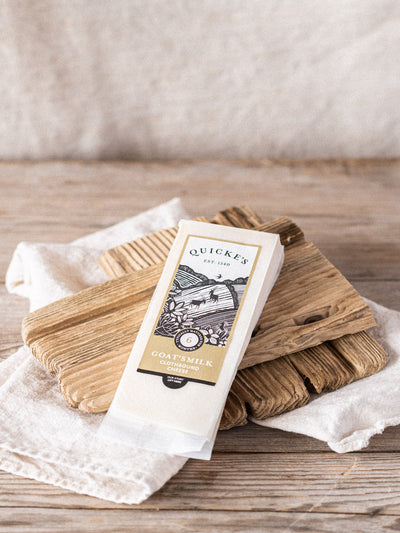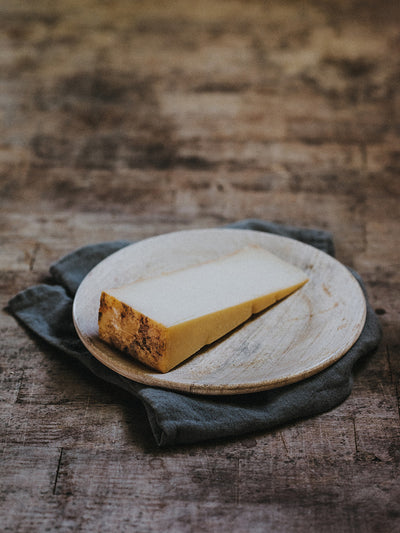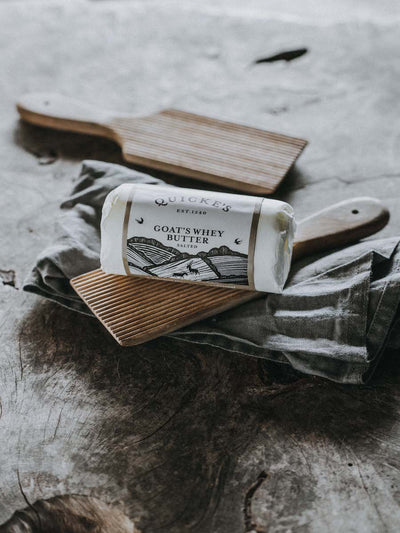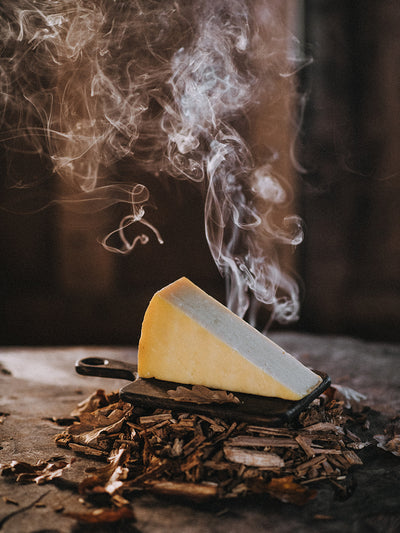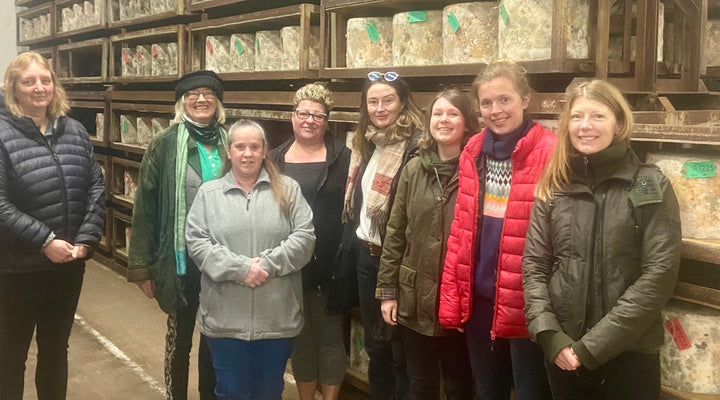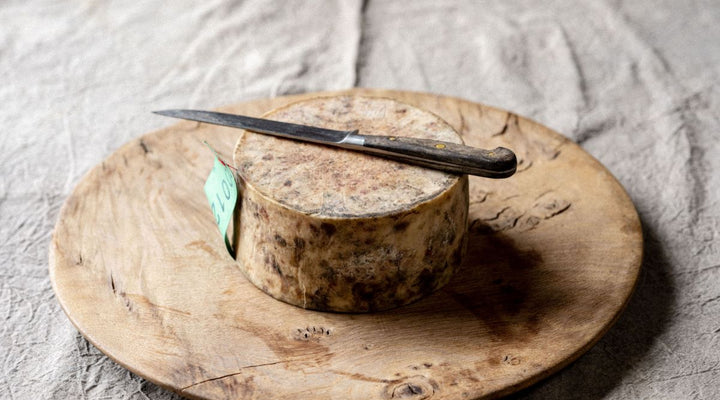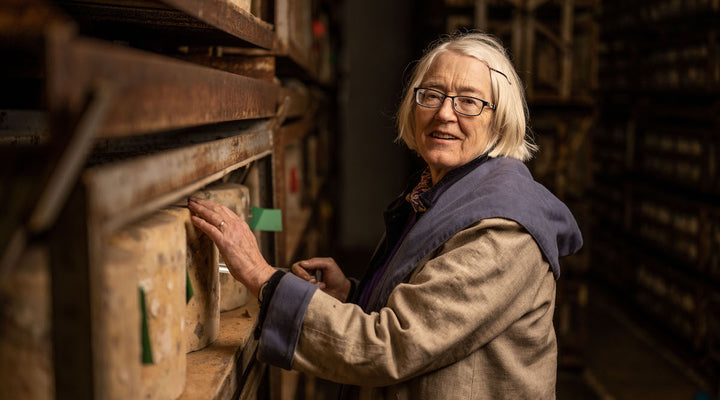Grass is cows' favourite food. It's lucky, then, that grass grows so well in the lush fields of Devon. The easiest way to harvest the grass is to have cows eat it for themselves. That way they get all the goodness in every bite, all those lovely volatiles you can smell when you cut the lawn. You lose a lot of those when you dry the grass (hay) or ferment it (silage). Those volatiles then come through in the milk, then the cheese, giving the glorious aroma you can describe as 'cow's breath': warm, animally, a green aroma.
Grass is cows' favourite food.
It's got good things going for it: feed cows on grass, and their milk contains more conjugated linoleic acid, CLA, (apparently good for everything) and the beneficial ratio of Omega 3 oils and Omega 6. Grass fed gives that rich yellow colour in the milk, from carotene (vitamin A) in grazed grass. The grass fed colour and goodness concentrates in the cheese.

Grazing
There's an art to getting cows to graze, especially if you want them to sustain themselves on the grass for most of the year, as we do. We started grazing in early February this year as the soil is firm enough to hold the animals so their hooves don't cut up the sward.
Measuring grass
We measure each paddock with a rising plate meter every week. It's a circular plate on a metal pole attached to a spring. You put the pole on the ground, and the plate rise up by how much grass is under the plate. The spring has some electronics which counts how high the plate rises in all the perhaps hundred times you plonk the plate meter down in a paddock. Then you know how much grass is in the paddock, and how much it's grown since last time you measured.
Do that every week and you can work out how much grass you've got across the farm, which paddock to go in next, if the grass is growing fast enough to feed them all the time or whether you need to stop up their feed with silage. We make a picture of it, our grass wedge, to guide us.
The grass fed wedge
You aim to put the cows in a paddock when each grass stem has three leaves on it. The top leaf is broad and harvests lots of sunlight. The bottom leaf is just starting to get shaded. That's the best combination of growth rate of grass, nutrition (not too fibrous, and enough volume), and recovery by the grass after it's been grazed.
You put them in just the right area to eat it down to a lawn between milkings. You need to eat all the leaves, as any leaves not grazed will decay, and form a manky mass. Cows have a very sensitive sense of smell and they don't like to shove their noses into decaying leaves. Without management, they will graze ever less tightly through the season. Eat the grass down tightly every grazing, and the leaves stay vibrant, fresh and nutritious, with all the good stuff to make the best milk.
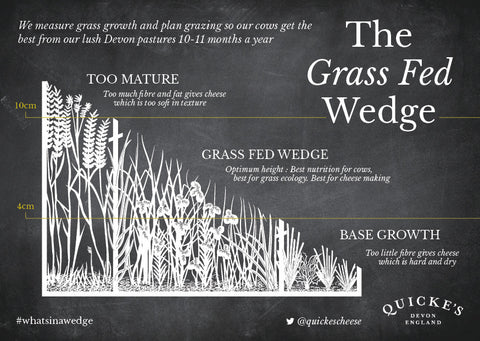
Types of grass
The main grass variety we use is perennial ryegrass. It's got a little red blush at the bottom of its stem, and grows early in the season and keeps growing late. It's best in combination with white clover, which grows well in the summer, is richer in protein and makes its own nitrogen fertiliser from the air in its root nodules. Put the two together and you get self-sustaining growth.
We're adding so more deep rooted plants, salad burnet, chicory, sainfoin and others, to bring minerals up from deep in the soil, to help soil structure, and to keep growing in a drought.
Grow perennial pasture, and the soil organic matter increases. We could take an awful lot of that carbon dioxide out of the air and put it back in the ground as organic matter, where it will make the soil richer and more productive. Cows do burp methane, and when they eat grass, they burp less.

